Any experience at the Guggenheim Museum in New York City begins the moment its unique exterior comes into view–once you cross the street and are faced with the circling levels of architecture in front of you. Standing in line and buying tickets is a pleasure as you look up towards the glass ceiling and spin down to the ground, following the waves of Frank Lloyd Wright.
Of course, you didn’t come for the architecture, but for the works that line those rotating walls. In this case, a retrospective of the works of Agnes Martin.
While the show is basically in order from Martin’s first works, traveling up the rotunda to her last, it begins with a leap ahead in time. In a front room of the museum, the viewer is faced with 12, six-foot paintings from later in Martin’s career. On first glance they seem to all be draped in white, each one identical to the next. Upon closer examination, however, the viewer begins to see bands of pale grey and blue, discerning one canvas from another. Thin pencil marks separate the bands. Some are divided four or five times, making it clear that no canvas is the same. While each canvas stands on its own, they are all together in their solitude, hence the title, “Islands I-XII,” separated only by the ocean of the wall. Taking a step back and looking around, the viewer is surrounded by white, cleanliness and serenity in a very calming experience shaped by Martin. The work clears the mind before it continues on with the rest of the exhibit.
The retrospective then returns to the beginning, or at least the beginning of the story the Guggenheim is telling, with a piece from 1957, when Martin began her journey into the world of abstract expressionism with the help of Ellsworth Kelly, arguably the God of the movement. Martin’s first paintings displayed at the Guggenheim show her struggle to find her footing in the world of abstract expressionism, coming off years of portraits and landscapes. We see hints to her future works, squares, sharp shapes, thick lines, as well as organic forms, most likely residue from her past artistic life.
It didn’t take long, however, for Martin to ditch the ovals and curved lines all together, and the rest of the retrospective is marked with sharp corners and lines. Her works flatten onto the page, brush strokes become less and less visible and colors become more monochromatic. “This Rain,” a particularly interesting painting of Martin’s bears a resemblance to the works of Mark Rothko, one of her favorite artists at the time.
While her works are simple and void of any discernable shapes, Martin’s work is still filled with meaning. Her works that are named (many remain untitled) often use words from nature. Rain, sun, grass, trees. Nature is very obviously an inspiration to Martin who grew up in Vancouver and later moved to New Mexico. While Martin was not attempting to represent nature in these works, as she stated many times that her paintings are not representations of anything, she wanted to evoke feelings of nature, something that brought a lot of joy to her.
Martin succeeds in evoking emotion from the viewer, despite the simplicity of her work. The viewer is unsure of what to think when looking at some of these works. They are not outrightly beautiful, but they are mesmerizing. The eyes move from line to line, taking in the brush strokes, the pencil marks, the colors. She does not tell the viewer how to feel, so the brain goes wild with emotion, left on its own without Martin’s guidance. Some paintings are enticing and can be appreciated for hours; their encompassing nature, the lines that go nowhere and everywhere. And some paintings are less appealing, but it is unclear as to why. It is identical to the one next to it, sans one line down the middle, but that one line means all the difference to the eye.
As the viewer continues up the ramp, he begins to experience Martin’s exploration into the use of grids in her paintings. Six by six feet canvases, like “White Flower” look monochromatic upon first glance, but as you step closer, a white grid begins to form by the thousands. The paintings almost resemble textiles with their intricate workings, possibly reminiscent of her time in New Mexico, though Martin denied this inspiration. Either way, the simplicity and repetitiveness leaves the viewer lost in the painting.
Along with these all-encompassing grids on canvases, are much smaller drawings on paper that Martin worked on as studies for her larger works. The grid on the small piece of paper makes it look almost like graph paper framed and placed on the wall, but upon further inspection one can spot the imperfections. This feeling of imperfection among perfection is something that follows the viewer throughout the retrospective. From far away, many of her works such as “The Islands I-XII” look pristine, with white and gray bars perfectly measured and symmetrical, but the work is free hand, and pencils line the edges where one color meets the next. The point is not to be perfect, but maybe it is to feign perfection for as long as one can, or maybe to show that nothing is perfect, not in nature, humanity, even art.
Viewers follow the journey of Martin as she leaves New York to return to New Mexico, going on an artistic hiatus and dealing with mental health issues that plagued her all of her life. Martin left the art word with her simple grids and color schemes, but when she returned seven years later, she brought more color into her life. Her paintings suddenly boast pale blues and pinks and the tight lines of the grids widen into much thicker bands of color, still often outlined by her trusted pencil.
In Martin’s later works there is a complete rejection of names. No longer are the paintings named after elements of nature, with the hope of evoking similar emotions. Instead, the works are untitled, with only numbers separating one from another. This leaves the viewer even more lost in interpretation, once again left with his emotions leading the way, a very powerful experience.
The colorful paintings are quickly replaced by shades of black and gray that cast a shadow over the viewer. While the reason for the switch of aesthetic is unknown, it could have to do with Martin’s struggles with mental health, namely schizophrenia.
Despite the simplicity of the work, one cannot say that Martin’s work is simple. It may be repetitive in color and imagery, but each piece evokes new emotions and thoughts. Depending on the width of the lines, the colors used, the type of paint, a new experience is born. Neither is the work easy to achieve. “Untitled #8” features a canvas of gray bands, offset by darker gray stripes. As with a lot of abstract art, it easy to say, “oh I could make that,” but that would be wrong. To get the acrylic paint to lie flat on the canvas as she does, is a skill that took even Martin a long time to perfect. And yet, this piece looks so effortless–a natural extension of Martin after years of creating work of the same vein.
Martin kept working, creating new art until she passed in 2004. When the six-foot canvases that she spent her life transforming became to big for her to handle, she reduced the size to five feet. Her last painting, “Untitled” is the perfect goodbye to the artist. It resembles many of her other works–bands of color, separated by penciled lines. It seems like an ode to her earlier work, but you can see the age of Martin in the piece. Whether it is intentional or not, the viewer can almost imagine the shaking hand of an older Martin as she applies paint to the canvas just like so many times before. This time is does not lay flat, the brush strokes are very visible, but it is Martin nonetheless.
By the end of the exhibit, the viewer feels in close camaraderie with Martin. He has gone through Martin’s life through her art–experiencing the ups and downs of her mood, her travels and her friendships. The viewer sees when she is feeling down and turns to dark colors, when she returns to New Mexico and takes inspiration from nature, and when her close friends and artists influence the way she painted. Her paintings tell a story without one single image.

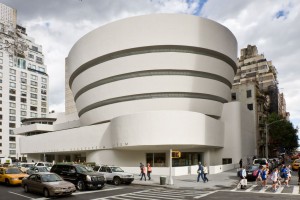

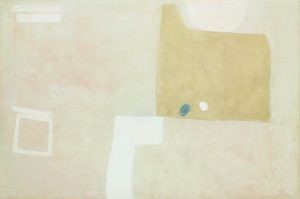
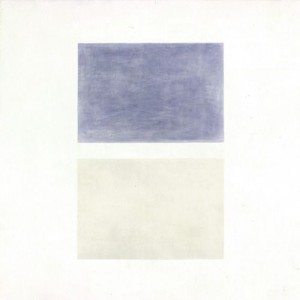
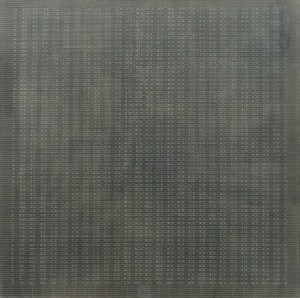
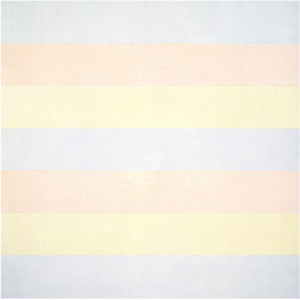

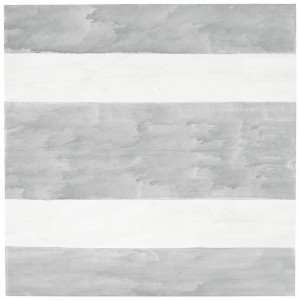
1,017 Comments
stepping too far Sewa Mobil di Bandung Murah Dengan Supir out into the area, craving company
Your article has broadened my understanding and challenged my preconceptions.
เข้าเล่นหวยลาวพัฒนา
Just because you Sewa Mobil Harian Bandung don’t know the people around you
the filter’s large size means that it requires less frequent JOKER WALLET
In our quest for connectivity and convenience, Live22 auto
increased overall productivity. MEGA888 AUTO
With its stylish color, PG SLOT AUTO
This is really a great website, PG SLOT AUTO WALLET
Anytime you participate in online shopping, pussyslot
Digital marketing is a fascinating field an unrealistically เว็บสล็อต 168 ฝาก ถอน true wallet
slot Agen Resmi dan terpercaya yang sangat sering เว็บสล็อตวอเลท
amazing You have explained each everything very well in detail. slotxo wallet
research, สล็อต ฝาก-ถอน true wallet ไม่มี บัญชีธนาคาร
information You have a good point here! สล็อตเว็บตรง
pgslot, PUSSY888 เว็บตรง
take care! 918KISS AUTO
This is very nice one gives indepth information. สล็อตjili วอเลท
make your product portfolio the center of ສລ໊ອດອອນລາຍ
and it’s very same subject matter with all your write-up Betflix wallet
telling the stories of their wearers solidifying their สล็อตฝากถอนวอเล็ท
constantly growing at an accelerating pace. JOKER SLOT
Our web development company offers scalable เว็บสล็อต xo ออ โต้
I hope to find something on this topic in your research, แลนด์ สล็อตออโต้
Very nice Article Keep it up for your good Work Thanks for sharinginformation The content was really very interesting. สล็อตออนไลน์
I’m excited to read more blogs about artificial intelligence. เว็บสล็อตออโต้
Community Manager, เว็บหวยออนไลน์ จ่ายจริง
LED kits, JILI WALLET
I must say that it’s fantastic and user-friendly. สล็อตวอลเลท
I’m looking for the best MEGA888 ฝาก-ถอน ไม่มีขั้นต่ำ
Unbelievable article! If you’re interested in making real money, this is a must-read. It provides unique insights and practical tips to help you succeed financially. Don’t miss out on this valuable information! join and experience now nba app
I’ve really noticed that repairing credit activity needs to be conducted with tactics. If not, you will probably find yourself destroying your standing. In order to succeed in fixing your credit score you have to ensure that from this second you pay all of your monthly dues promptly in advance of their slated date. It’s really significant given that by definitely not accomplishing this, all other activities that you will choose to use to improve your credit rank will not be useful. Thanks for sharing your strategies. 交通事故 弁護士 東京
Thank you for sharing your knowledge and expertise with the world. trang web cá cược bóng đá hợp pháp
This was the first Sewa Rental Mobil Bandung moment I remember an overwhelming respect
They assumed I Tempat Rental Mobil di Bandung either wouldn’t be offended by their comments
Very good article worth reading Like to read good articles. Thank you.
123 สมัคร
Hey there! Looking for the latest updates in the world of cricket? Check out the hottest news and stay informed about match results and player performances with 11ic Dont miss out on any of the action
The person you’re Rental Mobil Bandung dengan Supir sitting next to may not look like a CEO
This could include Rental Mobil Bandung Murah 24 Jam your co-workers, visiting speakers, the students in your section
Hiya, I am really glad I have found this information. หวย ฮานอย lotto
kubet club 888 With a wide range of exciting games and a user-friendly interface, LunubetCasino offers endless entertainment and thrilling opportunities to win big!
Wow, great stuff. I have been considering this for a few years. I’m glad to seemingly find someone that comes to the same conclusions as me. At least it seems that’s the case. I’ll keep visiting your site to stay informed. 債務整理 弁護士 東京
very good put up, i certainly love this website, carry on it Funguy Gummies
Hello there, you web site is incredibly funny he informed me to cheer up .. Merry Christmas” Funguy
Unquestionably consider that which you said. Your favourite reason appeared to be at the web the simplest factor to be mindful of. I say to you, I definitely get annoyed even as folks consider worries that they just do not recognise about. You managed to hit the nail upon the highest neatly as defined out the whole thing with no need side-effects , people could take a signal. Will likely be back to get more. Thank you! 江戸川区 弁護士
I just read your article, i recently came across it on bing, interesting read, i’ll sure be coming back to this blog again. ai photo editing
Your post helps me a lot you described all the points in detail
หวย ยี่ กี lottovip
Your blog stands out for its originality and thoughtful analysis. It’s clear you put a lot of effort into each post.
SettinganVVIP
I appreciate the thoughtfulness and care with which you approached your subject matter. sòng bạc trực tuyến
Specialists ekspedisi jakarta balikpapan advocate for MUST, Maximum Use of Supportive Therapy
Through ‘Maximum cargo jakarta balikpapan Use of Supportive Therapy